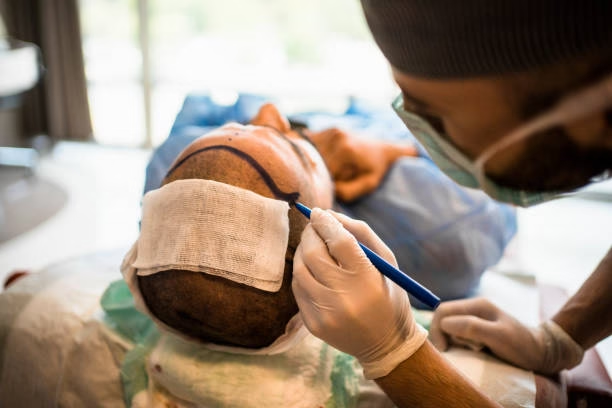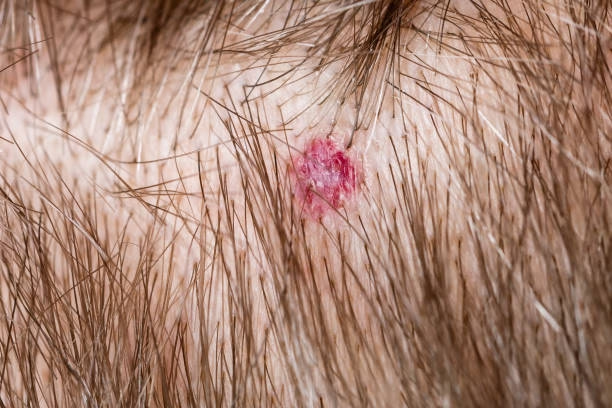Hair loss, whether due to genetics, lifestyle, or medical conditions, can significantly impact self-esteem and quality of life. According to global statistics, nearly 85% of men and 50% of women experience hair thinning at some point, leading many to seek advanced solutions like hair transplants. With modern medical advancements, hair restoration has become a highly effective and long-lasting solution.

As Dr. Viral Desai, renowned for his expertise in hair transplant in Mumbai, explains:
“Hair transplantation is a meticulously planned minimally invasive procedure that restores natural hair growth using advanced techniques. It involves relocating healthy hair follicles from the donor area to balding areas. With modern advancements in transplantation techniques, results appear more natural. Additionally, proper post-transplant care is vital in enhancing growth and ensuring long-term success.”
This blog explores the recovery process, side effects, and treatments to consider 3 months after hair transplant.
What Can I Expect 3 Months After a Hair Transplant?
The journey to full hair restoration is gradual, and the third month marks an important milestone. Here’s a breakdown of the timeline leading up to this stage:
First Few Days: The scalp may remain sensitive, and mild swelling or redness is common. Patients must avoid sun exposure, vigorous activities, and harsh hair products.
Week 1-2: Scabbing and crusting subside, and hair follicles begin their healing phase. Gentle hair washing with prescribed shampoos is recommended.
Week 3-4: The “shedding phase” sets in as the transplanted hair temporarily fall out. This is a normal part of the hair growth cycle.
Month 2: New hair follicles enter the growth phase, though they may still be fine and barely visible.
Month 3: Hair regrowth becomes noticeable, with small, thin strands emerging across the treated areas.
As Dr. Viral Desai, a seasoned hair transplant specialist says:
“By the third month, new hair growth is typically sparse and fine. This is expected, as the follicles are still developing and strengthening. Full results take time. Most patients experience significant hair thickening between 6 to 12 months post-transplant.”
Are you concerned about your hair growth progress? Consult a skilled hair transplant surgeon for expert guidance on what to expect and how to care for your newly transplanted hair.
Let’s explore common side effects and how to manage them effectively.
Common Side Effects 3 Months After a Hair Transplant
3 months post hair transplant, mild side effects may persist. Here’s what to expect and how to manage them:
Mild Itching: As new hair grows, the scalp may feel itchy. Keeping the area moisturized and avoiding scratching can help.
Folliculitis: Small red bumps may form around the follicles. Warm compresses and medicated lotions can reduce discomfort.
Temporary Hair Thinning: Some surrounding hairs may continue shedding, but this is part of the natural cycle.

Dr. Viral Desai, a trusted celebrity hair transplant surgeon in Mumbai, says:
“Eating a balanced diet rich in proteins, vitamins, and biotin supports optimal hair growth. Avoiding smoking and alcohol consumption can enhance the healing process. Also, gentle scalp massages stimulate blood flow and improve follicle health.”
Now, let’s look at treatments that can further enhance hair growth post-transplant.
Treatments to Consider 3 Months Post Hair Transplant
To enhance hair growth and strengthen follicles, consider the following:
PRP Therapy (Platelet-Rich Plasma): A regenerative treatment that boosts follicular health by increasing blood supply to the follicles. This can accelerate hair growth and improve density.
Low-Level Laser Therapy (LLLT): A non-invasive light therapy that stimulates hair regrowth at the cellular level. It helps strengthen new strands and reduce inflammation in the scalp.

Nutritional Supplements: Essential vitamins like biotin, zinc, and omega-3 fatty acids promote thicker and healthier hair.
Minoxidil Application: A topical solution that enhances blood flow to the hair follicles. It may help accelerate the growth phase of newly transplanted hair.
Scalp Massage: Regular scalp massage improves circulation and nutrient absorption. This can support follicular development and prevent excessive dryness.
Looking for ways to enhance your results? Consult an experienced hair transplant surgeon to explore the best post-transplant treatments.
Recognizing when to seek medical advice is essential. Here’s what you should know.
When to Consult a Doctor?
Consult a specialist if you experience:
Severe Pain or Swelling: Persistent discomfort that does not improve with medication may indicate an underlying issue.
Excessive Shedding: While some shedding is normal, excessive hair loss beyond the expected shedding phase could signal an issue with follicular survival.
Signs of Infection: Redness, pus formation, or an unpleasant scalp odor may indicate an infection requiring antibiotics or medical intervention.
Delayed Hair Growth: If you don’t observe visible hair growth 4 months after hair transplant, a doctor can assess whether additional treatments are needed.
Scalp Itching or Flaking: Persistent itching or excessive dandruff-like flakes could suggest an inflammatory reaction that requires specialized treatment.
Conclusion
Hair loss can be distressing, but a well-performed hair transplant offers renewed confidence. The third month is a turning point where patience and care ensure long-term success.
As Dr. Viral Desai, a hair transplant expert, says:
“Seeing new hair growth requires patience, but the results are worth the wait. Regular follow-ups and a dedicated hair care routine accelerate the healing process. Lastly, with the right guidance, every step of your hair restoration journey can be smooth and rewarding.”
Concerned about your progress? Consult a knowledgeable hair transplant specialist to ensure the best care for your hair transplant results.
Still have questions? Let’s address some common concerns.
Frequently Asked Questions:
1. When will my transplanted hair start growing properly?
New hair growth begins around 3 months but becomes thicker and more noticeable between 6-12 months as the follicles mature.
2. Can I dye my hair 3 months after a transplant?
It’s best to wait at least 6 months before using hair dye to avoid scalp irritation and potential damage to fragile new hair follicles.
3. Is it normal to have uneven hair growth at this stage?
Yes, hair regrowth occurs in phases, so initially, some areas may appear denser than others. Over time, growth will even out.
4. How can I speed up hair growth post-transplant?
A nutrient-rich diet, PRP therapy, and proper scalp care, including gentle shampooing and avoiding harsh chemicals, can enhance hair regrowth.
5. Can I resume swimming 3 months after a hair transplant?
Yes, but you must minimize chlorine exposure. Use a swimming cap and rinse your hair immediately after swimming to prevent follicular irritation.
Disclaimer: The information shared in this content is for educational purposes only and not for promotional use.


